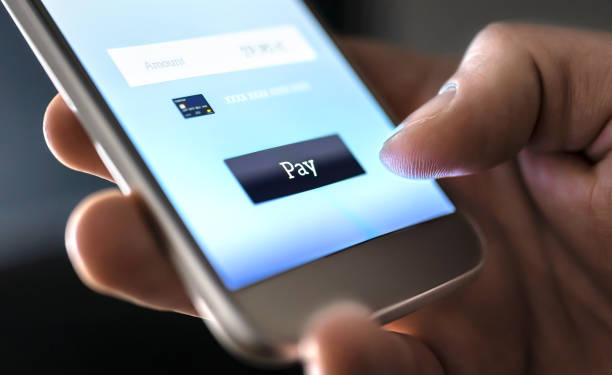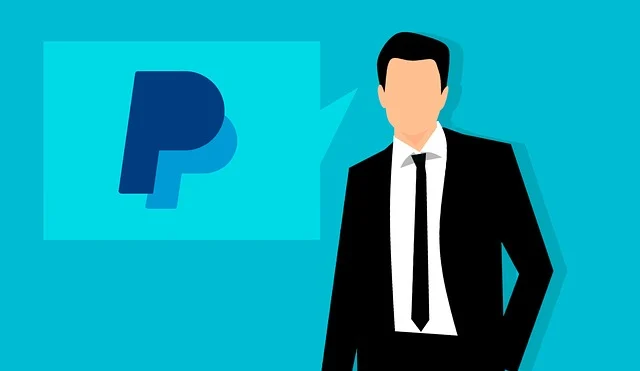In the realm of financial technology, few companies have had as profound an impact as PayPal. Since its inception, PayPal has navigated numerous challenges, embraced technological innovations, and made strategic decisions that have shaped the digital payment landscape. This chapter delves into the critical moments that defined PayPal’s trajectory, the technologies that propelled it forward, and the strategic maneuvers that ensured its dominance in an increasingly competitive environment.
The Technological Backbone: Early Innovations
From the beginning, PayPal’s foundation was built on innovation. The company’s initial service, developed by Confinity, allowed users to send money through email, which was revolutionary at the time. This simple yet powerful idea leveraged the internet’s capabilities to facilitate transactions that were previously reliant on traditional banking methods. As the platform evolved, it needed a robust technological backbone to support its growing user base.
1. Building a Secure Infrastructure
Security was paramount in establishing user trust. As a financial service, PayPal had to ensure that users felt safe conducting transactions on its platform. In its early days, PayPal implemented stringent security measures, including encryption protocols that safeguarded sensitive information. The development of SSL (Secure Socket Layer) encryption technology played a crucial role in protecting user data during transactions.
PayPal also developed sophisticated fraud detection algorithms to monitor transactions in real-time. By analyzing patterns and flagging suspicious activities, the company could prevent fraud before it occurred, further solidifying user confidence. These early innovations in security not only differentiated PayPal from competitors but also laid the groundwork for industry standards in online payments.
2. User Experience and Interface Design
Another critical aspect of PayPal’s early success was its focus on user experience. The team recognized that for a new financial service to succeed, it needed to be user-friendly and accessible to people of all backgrounds. PayPal’s interface was designed with simplicity in mind, allowing users to navigate the platform effortlessly.
The ease of signing up for an account and the straightforward process for sending and receiving money contributed to PayPal’s rapid adoption. Users could link their bank accounts or credit cards to their PayPal accounts, making transactions seamless. This focus on user experience became a cornerstone of PayPal’s philosophy, and it would continue to evolve as technology advanced.
Strategic Partnerships and Acquisitions
As PayPal grew, strategic partnerships and acquisitions played a vital role in expanding its reach and capabilities. Recognizing the potential of e-commerce, PayPal sought alliances that would allow it to become the preferred payment method for online merchants.
1. Integration with eBay
The partnership with eBay in the early 2000s was a turning point for PayPal. eBay was experiencing explosive growth, and its sellers were in dire need of a reliable payment solution. PayPal’s integration as the default payment method for eBay transactions allowed it to tap into a vast and eager market.
This partnership was mutually beneficial; while PayPal gained millions of users, eBay enhanced its platform by offering a secure payment option. The success of this integration led to significant growth for both companies, with PayPal processing billions of dollars in transactions through eBay.
2. Acquisitions to Enhance Capabilities
To further solidify its market position, PayPal made several strategic acquisitions. One of the most notable was the purchase of Braintree in 2013 for $800 million. Braintree was known for its advanced payment processing technology and its acquisition of Venmo, a popular P2P payment app among millennials. By acquiring Braintree, PayPal not only gained access to innovative technology but also tapped into a younger demographic that was rapidly adopting mobile payments.
This acquisition allowed PayPal to expand its services beyond traditional online payments. Venmo, with its social media-like interface and seamless money transfer capabilities, became a crucial part of PayPal’s strategy to appeal to younger users who preferred mobile-first solutions.
3. Partnerships with Major Brands
In addition to strategic acquisitions, PayPal established partnerships with major brands to broaden its service offerings. Collaborations with companies like Mastercard and Visa enabled PayPal to extend its reach into brick-and-mortar retail environments. By allowing users to link their PayPal accounts to their debit or credit cards, PayPal facilitated in-store transactions, creating a more integrated payment ecosystem.
The partnership with Uber also highlighted PayPal’s adaptability. As the ride-sharing giant emerged, PayPal became a payment option for users, allowing seamless fare payments through the app. This partnership not only expanded PayPal’s user base but also positioned it as a forward-thinking payment solution in the rapidly changing landscape of transportation.
Embracing Mobile Payments
As smartphones became ubiquitous, the need for mobile payment solutions surged. Recognizing this trend, PayPal adapted its services to meet the growing demand for mobile payments. The development of the PayPal mobile app allowed users to send and receive money, manage their accounts, and conduct transactions from their smartphones.
1. The Rise of Venmo
The acquisition of Venmo proved to be a pivotal moment in PayPal’s mobile strategy. Venmo’s social features, such as the ability to share transaction details on a social feed, appealed to younger audiences who valued both convenience and community. The app quickly gained traction among millennials and Gen Z, leading to significant growth in P2P transactions.
By integrating Venmo into its offerings, PayPal positioned itself as a leader in mobile payments. Venmo’s user-friendly interface and social media elements allowed PayPal to tap into a demographic that preferred digital solutions over traditional banking methods. This shift toward mobile payments aligned with broader trends in consumer behavior and demonstrated PayPal’s ability to innovate and adapt.
2. Contactless Payments and QR Codes
In addition to mobile payments, PayPal embraced contactless payment technology to enhance the user experience. As consumers began to favor touchless transactions, especially during the COVID-19 pandemic, PayPal implemented QR code payments. This feature allowed users to complete transactions by scanning QR codes at participating merchants, offering a convenient and hygienic payment method.
The introduction of contactless payments positioned PayPal to capture a share of the growing market for digital wallets. By allowing users to make payments without physical contact, PayPal addressed safety concerns while meeting the demand for speed and convenience.
Navigating Regulatory Challenges
With rapid growth and innovation came regulatory scrutiny. As PayPal expanded globally, it faced a myriad of regulations governing digital payments and financial services. Navigating these challenges was crucial for sustaining its growth and ensuring compliance with local laws.
1. Compliance with Financial Regulations
In the United States, PayPal had to comply with regulations set forth by the Financial Crimes Enforcement Network (FinCEN) and other regulatory bodies. Anti-money laundering (AML) laws and Know Your Customer (KYC) requirements became integral to PayPal’s operations. The company invested in technology to monitor transactions for suspicious activity and verify user identities.
Adapting to regulatory requirements not only ensured compliance but also strengthened user trust. By prioritizing security and transparency, PayPal positioned itself as a responsible player in the financial ecosystem.
2. Global Expansion and Local Regulations
As PayPal expanded internationally, it encountered diverse regulatory landscapes. Each country had its own set of rules governing online payments, and PayPal had to adapt its services to comply with local regulations. This required a keen understanding of international laws and a willingness to collaborate with regulatory bodies.
In markets like Europe, PayPal faced stringent regulations related to data privacy and consumer protection. The implementation of the General Data Protection Regulation (GDPR) in 2018 mandated significant changes to how companies handled user data. PayPal responded proactively, enhancing its data protection measures and ensuring compliance to maintain its reputation in the European market.
Innovating with Cryptocurrency
In recent years, the rise of cryptocurrency has transformed the financial landscape, and PayPal recognized the potential of digital currencies. As more consumers and businesses began to explore cryptocurrency, PayPal sought to integrate these assets into its platform.
1. The Launch of Cryptocurrency Services
In late 2020, PayPal announced that it would allow users to buy, sell, and hold select cryptocurrencies directly within the PayPal app. This marked a significant shift in the company’s strategy, as it positioned itself at the forefront of the growing interest in digital currencies. Users could purchase Bitcoin, Ethereum, Litecoin, and Bitcoin Cash, all while benefiting from PayPal’s secure platform.
The decision to embrace cryptocurrency was not without its challenges. PayPal had to navigate the complexities of cryptocurrency regulations and ensure that its services complied with financial laws. However, by providing users with a familiar and trusted environment to engage with digital currencies, PayPal democratized access to crypto for millions of users.
2. Exploring Blockchain Technology
Beyond allowing cryptocurrency transactions, PayPal has explored the underlying technology of blockchain. The company recognized that blockchain could enhance transparency and security in financial transactions. By researching and investing in blockchain technology, PayPal aimed to develop innovative solutions that could streamline processes and improve efficiency.
PayPal’s interest in blockchain reflects its commitment to staying ahead of the curve in a rapidly changing financial landscape. As the digital economy evolves, the integration of blockchain technology could unlock new opportunities for PayPal and reshape the future of payments.
The PayPal Ecosystem: A Comprehensive Payment Solution
As of the 2020s, PayPal has evolved into a comprehensive payment ecosystem. Its services extend beyond simple online payments, encompassing a range of financial solutions designed to meet the diverse needs of consumers and businesses.
1. Business Solutions and Merchant Services
PayPal has developed robust solutions for merchants, providing tools that streamline payment processing, invoicing, and sales management. PayPal’s merchant services empower businesses of all sizes to accept payments online and in-store, enhancing their ability to reach customers across various channels.
With features like PayPal Checkout, merchants can offer customers a seamless payment experience that boosts conversion rates. By integrating with e-commerce platforms like Shopify, WooCommerce, and BigCommerce, PayPal has become a go-to choice for online retailers.
2. Expanding Internationally
In recent years, PayPal has made concerted efforts to expand its services internationally. Recognizing the growing demand for digital payments in emerging markets, PayPal has launched initiatives to enhance its presence in regions like Latin America, Asia, and Africa.
In countries where traditional banking services are limited, PayPal’s digital payment solutions provide a lifeline for individuals and businesses seeking to engage in commerce. By tailoring its offerings to meet local needs and preferences, PayPal has successfully expanded its global footprint.
The Future of PayPal
As PayPal continues to innovate and adapt to the evolving financial landscape, its future appears bright. The company remains committed to enhancing user experience, expanding its services, and exploring new technologies.
1. Embracing Artificial Intelligence
Artificial intelligence (AI) is poised to play a significant role in shaping the future of financial technology. PayPal has already begun incorporating AI into its operations to enhance fraud detection, streamline customer service, and personalize user experiences. By leveraging AI algorithms, PayPal can analyze vast amounts of data to identify patterns and trends, allowing for more informed decision-making.
2. Navigating the Regulatory Landscape
As PayPal expands its offerings, it will continue to face regulatory challenges. The company must remain vigilant in adapting to changing regulations and ensuring compliance across different markets. By proactively engaging with regulators and staying informed about industry developments, PayPal can navigate the complex landscape of financial regulation.
Conclusion: PayPal’s Enduring Legacy
PayPal’s journey from a small startup to a global leader in digital payments is a testament to the power of innovation, adaptability, and strategic foresight. Through its technological advancements, strategic partnerships, and commitment to user experience, PayPal has transformed the way people conduct transactions.
As the digital economy continues to evolve, PayPal remains at the forefront of financial technology. Its commitment to embracing new technologies, exploring cryptocurrency, and expanding its services ensures that PayPal will remain a driving force in shaping the future of payments. The company’s enduring legacy lies not only in its financial success but also in its role as a pioneer in revolutionizing how individuals and businesses interact with money.






